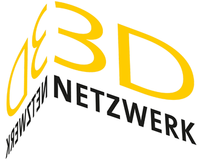Stereolithography (SLA)
Stereolithography, also known as SLA 3D printing, is an additive process and belongs to the Vat Photopolymerization family. The SLA 3D printing technology was patented in 1986 by Chuck Hull, who then founded the company 3D Systems. At the end of the 2000s, the patents began to expire and led to the introduction of desktop 3D printers. SLA 3D printing technology is one of the most common and widely used technology in rapid prototyping.
Working principle of Stereolithography (SLS)
The materials used in SLA 3D printing are light-reactive thermoset materials known as resins. In SLA 3D printing, liquid photopolymer resin in a vat is selectively cured to a predetermined thickness and is hardened into the desired shape layer by an ultraviolet light source. The UV laser beam is directed towards the bottom cross-section of the tank. The UV laser beam draws the cross-section of the model and selectively hardens the material. A recoating blade passes over the previous layer before the next layer is built. This is done to ensure that there are no defects (such as air gaps) in the previous layer and to provide a smooth resin base for building the next layer on it. The new layer is then built on the top of the previous layer, and the process is repeated until the part is fully printed. The UV laser cures the photopolymer resin layer by layer, and every time the layer is cured the build platform Is lowered in the liquid photopolymer resin by a distance equivalent to the layer thickness. Once the part is printed, it should be rinsed with isopropyl alcohol to remove the unused resin. SLA printed parts are brittle, and some parts require the post-curing operation to obtain a complete cure and stability. Then the support structures should be removed and depending upon the end application, or the desired surface quality, additional post-processing steps such as machining. priming, painting can be performed.
Materials and applications
SLA materials are liquid resins, and the price per liter varies from 50 to 500 euros. SLA allows the use of a wide range of resins with diverse physical properties based on end applications. The resins can also be filled with secondary materials such as glass or ceramics. The most commonly used materials are clear resins, castable resins, tough resins, high-temperature resins, flexible resins. Resins with various optical, mechanical, thermal properties can be used for fabricating the parts as per the end application. SLA can print parts with very high precision and high detail, and thus has wide applications in medical, jewelry, engineering, fashion industries. The SLA printed parts are also watertight which expands its use in the field of automotive, biomedical research.
Advantages of SLA
• Smooth surface finish
• High level of dimensional accuracy
• High detail parts and intricate features can be easily printed
Disadvantages of SLA
• UV sensitive
• Very brittle, cannot be used as functional prototypes.




